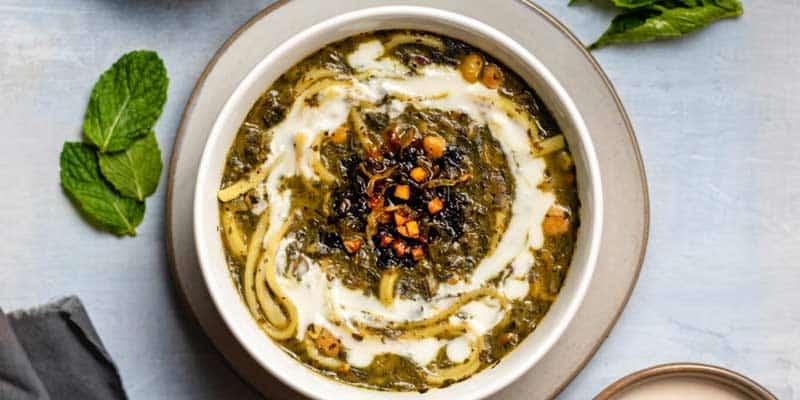Top Persian Foods to Try in Iran in 2025 – A Culinary Journey for Every Traveler
Persian cuisine is one of the most flavorful and diverse in the world, thanks to Iran’s vast geography, rich culture, and varied ethnic traditions. Persian food is a blend of herbs, spices, rice, meat, and fresh vegetables. From north to south, every city and region in Iran offers its own unique local dishes, ingredients, and cooking styles.
When you travel to Iran, exploring its traditional Iranian food is an essential part of the experience. Whether you’re visiting Tehran, Shiraz, Isfahan, or Tabriz, you’ll find a wide variety of delicious Persian dishes that reflect the history and heart of Persian culture.
So if you’re planning a trip to Iran, don’t miss the chance to experience its rich and diverse culinary heritage. From street food to royal dishes, here are 20 must-try Persian foods that every traveler should taste during their Iran adventure:
🍽 Must-Try Persian Foods in 2025
So below are some of the most popular Persian dishes that both tourists and locals highly recommend. These meals are widely available across Iran and are a must for any food lover visiting the country in 2025.
👉 Check out our City Guide section for detailed recommendations on the best local Iranian restaurants, street food spots, and regional dishes across different provinces.
ASH-E-RESHTEH
Ash Reshteh – The Must-Try Persian Noodle Soup in Iran
If you’re traveling to Iran during the colder months, don’t miss the chance to try Ash Reshteh. Ash-E-Reshteh is undoutedly one of the most traditional and beloved Persian dishes. This Iranian noodle soup is a staple in many Iranian households and a favorite comfort food, especially in fall and winter.
🌿 What Is Ash Reshteh?
Ash Reshteh is a thick and flavorful vegetarian Persian soup. Iranian make it with a blend of fresh herbs, legumes (like chickpeas, lentils, and kidney beans), and special Persian noodles known as reshteh. It’s typically garnished with:
- Fried onions
- Fried dried mint
- Kashk (a fermented whey sauce)
This warm dish is best enjoyed with hot Sangak bread (a traditional stone-baked Persian flatbread), making it a must-try Iranian food for every traveler.
🥣 Why You Should Try Ash Reshteh During Your Trip to Iran
Whether you’re looking for authentic Persian food, a plant-based Iranian meal, or simply a comforting dish during the cold season, Ash Reshteh is an ideal choice surely. It’s commonly served at both lunch and dinner, and it’s widely available in traditional restaurants and even some street food stalls across Iran.
This dish is not only a vegetarian-friendly Iranian option but also a perfect example of traditional Iranian cuisine packed with flavor and history.
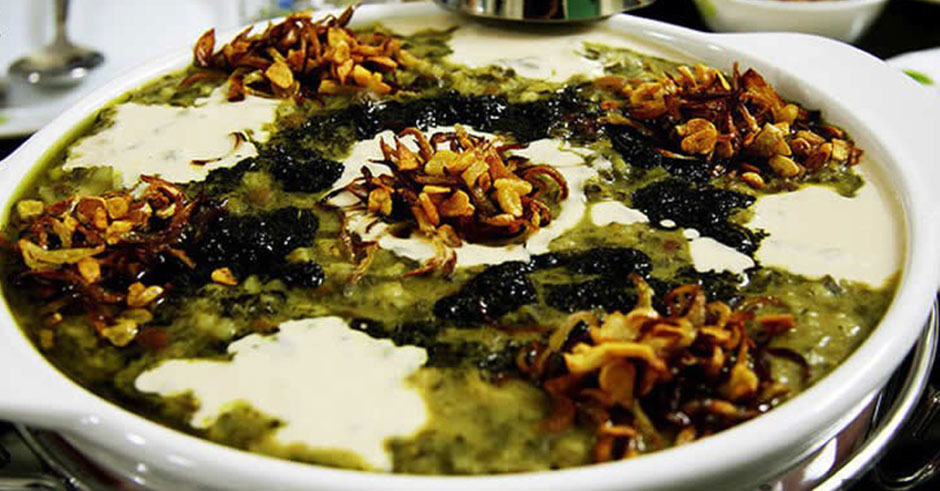
ABGOOSHT OR DIZI
Dizi (Abgoosht) – The Classic Persian Broth You Must Try in Iran
When you travel to Iran, trying Dizi, also known as Abgoosht (Persian meat and bean broth), is an unforgettable culinary experience. This traditional Persian dish is especially popular in the cold seasons and is typically enjoyed as a hearty lunch or dinner. At Wegoiran.com, we highly recommend including Dizi in your Iranian food adventures.
🥘 What Is Dizi (Abgoosht)?
Dizi is a slow-cooked stew made from tender lamb, chickpeas, white beans, potatoes, tomatoes, onions, dried lime (limoo amani), and a blend of Persian spices like turmeric, cinnamon, pepper, and saffron. Iranians traditionally serve Dizi in stone or clay pots.
What makes Dizi unique is not only its taste but also its traditional way of eating. The rich broth is first poured into a bowl and sipped with Sangak or Barbari bread. The remaining solids—meat, beans, and potatoes—are mashed into a paste using a goosht-koob (meat masher) and eaten separately.
🍽 How to Eat Dizi Like a Local
This iconic Iranian food is typically served with:
- Fresh Sangak or Barbari bread
- Raw onion
- Mixed Persian herbs (sabzi khordan)
- Yogurt or torshi (pickled vegetables)
- A refreshing drink like Doogh (yogurt soda) or even Coca-Cola
Pro tip: Tear small pieces of bread into the broth to soak up the flavor, just like locals do!
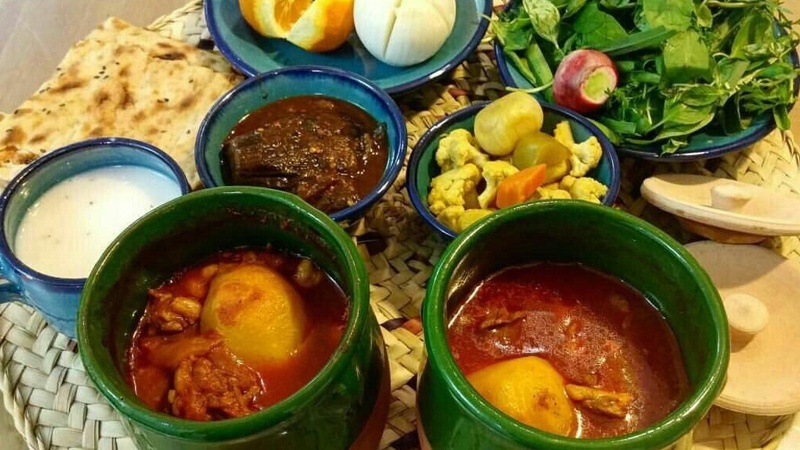
Kalam Polo
Kalam Polo Shirazi – A Must-Try Local Dish in Iran
Kalam Polo Shirazi is one of the most popular and authentic Persian foods you can try during your travel to Iran, especially when visiting Shiraz. Known for its rich aroma and unique taste, this traditional Iranian dish is a local specialty of Shiraz, often enjoyed by both locals and tourists.
What Is Kalam Polo?
In Persian, “Kalam” means cabbage, and “Polo” means rice. As the name suggests, the main ingredients of Kalam Polo are rice, cabbage, and deliciously spiced meatballs, combined with a distinctive mix of Persian herbs such as leeks, tarragon, basil, and dill. These herbs can be used either fresh or dried, giving the dish its signature flavor.
How Is Kalam Polo Shirazi Served?
Kalam Polo is typically served with:
Salad Shirazi (a refreshing cucumber, tomato, and onion salad)
Persian pickles (torshi)
Or a side of traditional yogurt
This comforting dish is a local favorite in Shiraz and a must-try for food lovers exploring Iranian cuisine.
Experience Kalam Polo with a Local Food Tour in Shiraz.
Want to do more than just taste Kalam Polo? Join our Shiraz Daily Tours or Persian Food Tours at Wegoiran Travel Agency, where you can learn how to cook Kalam Polo Shirazi with local chefs and experience authentic Iranian culinary traditions firsthand.
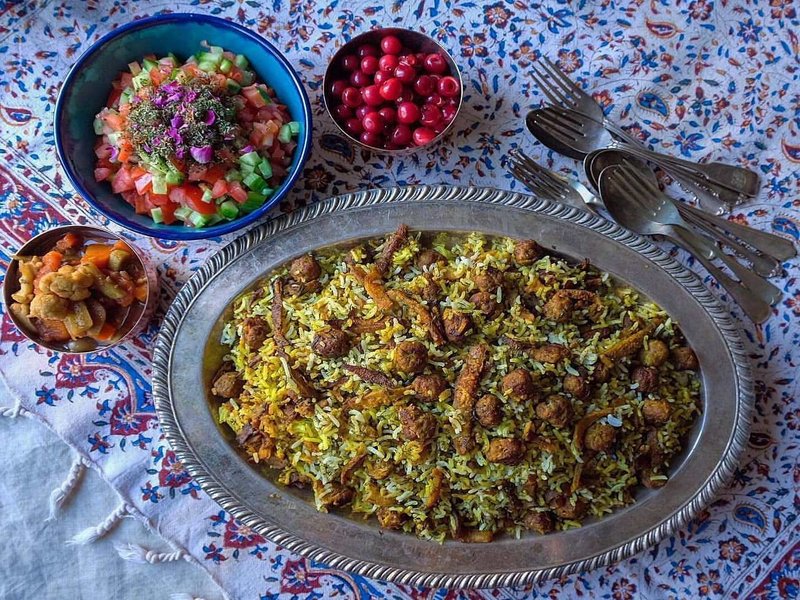
KASHK-E-BADEMJAN
Kashk Bademjan – A Must-Try Persian Appetizer in Iran
Kashk Bademjan (کشک بادمجان) is one of the most popular and traditional Persian appetizers you’ll find across Iranian cuisine. This flavorful dish is made with fried eggplant (bademjan),topped with kashk (fermented whey), fried garlic, mint, and crushed walnuts. It’s a staple on most menus in Iranian restaurants, especially in cultural hubs like Tehran, Shiraz, and Isfahan.
What Is Kashk?
Kashk is a creamy dairy product made from strained yogurt or fermented whey. It has a tangy, salty flavor and is packed with protein and probiotics. While recently gaining popularity in Western health food trends, it has been a core ingredient in Persian cooking for centuries.
Why Try Kashk Bademjan in Iran?
This hearty eggplant dip is:
- Rich in flavor and nutrients
- A vegetarian-friendly option for travelers
- Usually served warm with fresh Persian bread like lavash or sangak
- A perfect starter before a main course like kebab or ghormeh sabzi
Whether you’re a foodie or a cultural explorer, Kashk Bademjan is a must-have during your Iran travel experience.
Where to Try Kashk Bademjan?
You can enjoy Kashk Bademjan at nearly every traditional Persian restaurant across Iran. For a more immersive experience, join a Persian food tour or a cooking class in Iran with Wegoiran Travel Agency, and learn how to prepare this iconic dish yourself.
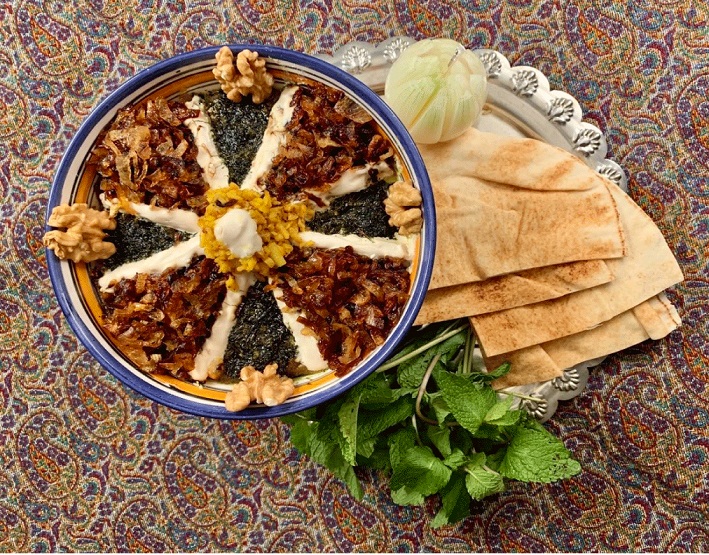
Chelo Kebab
Chelo Kebab – Iran’s National Dish and Cultural Icon
Chelo Kebab (چلو کباب) is not just a Persian food — it’s a national dish of Iran and a beloved part of Iranian culinary identity. If you’re planning to travel to Iran, tasting Chelo Kebab is an essential part of the experience.
What Is Chelo Kebab?
This traditional Iranian dish features steamed saffron rice (“chelo”) served with grilled kebabs, typically made from lamb or beef, cooked over an open flame. It’s a popular meal found in restaurants, local eateries, and homes throughout the country.
What Comes with Chelo Kebab?
Iranian often serve a classic Chelo Kebab plate with:
- Steamed basmati rice infused with saffron
- Grilled tomatoes
- Kebab butter (a flavorful seasoned butter to mix with rice)
- Fresh herbs such as parsley, mint, and basil
- A dash of sumac for tangy flavor
- Side drinks like Doogh (a salty yogurt drink) or Coca-Cola
- Optional: served with Sangak bread or lavash instead of rice
Why You Should Try Chelo Kebab in Iran
Chelo Kebab is a must-try Persian food for every visitor. Its bold flavor, cultural significance, and hearty nature make it a perfect introduction to Iranian cuisine. Whether you’re in Tehran, Shiraz, or Isfahan, this dish is available everywhere — from street-side kebab houses to upscale traditional restaurants.
Experience It with Local Experts
Join a Persian food tour in Iran or a culinary experience in Shiraz or Tehran through Wegoiran Travel Agency to discover how Chelo Kebab is prepared, grilled, and served the authentic way.

Kuku Sabzi
🥬 Kuku Sabzi – A Delicious Iranian Herb Frittata You Must Try in Iran
Kuku Sabzi (کوکو سبزی) is one of the most beloved vegetarian Persian dishes and a must-try for anyone traveling to Iran. Known for its vibrant green color and aromatic flavor, this traditional Iranian herb frittata is often served during Nowruz (Persian New Year) and on other festive occasions, but you can enjoy it year-round across the country.
🔍 What Is Kuku Sabzi?
Kuku Sabzi is a fluffy Persian-style omelet made primarily with fresh herbs like parsley, cilantro, dill, and chives. The herbs are finely chopped and mixed with eggs, turmeric, salt, and pepper. Some versions include walnuts and barberries (zereshk) for added flavor and texture.
Unlike Western omelets or frittatas, Kuku Sabzi has a much higher herb-to-egg ratio, which gives it its signature deep green color and earthy taste.
🥗 Ingredients of Kuku Sabzi
- Fresh parsley
- Fresh cilantro
- Dill
- Chives or green onions
- Eggs
- Turmeric
- Salt and pepper
- Optional: barberries, walnuts, baking powder
Cooking tip: The herbs can be used fresh or sautéed slightly before mixing with eggs. It’s typically fried on both sides until golden brown or baked for a healthier version.
🍽️ How Is Kuku Sabzi Served?
Kuku Sabzi is extremely versatile. It can be served hot or cold, making it ideal for picnics or quick meals. It’s usually eaten with:
- Lavash or Barbari bread
- Yogurt or mast-o-khiar (yogurt and cucumber dip)
- Fresh herbs and pickles
- Doogh (Persian yogurt drink)
It’s also a great vegetarian option for travelers who want to explore authentic Persian cuisine without meat.
🇮🇷 Where to Try Kuku Sabzi in Iran?
Whether you’re in Tehran, Shiraz, Isfahan, or a small village, you’ll find Kuku Sabzi in many homes and local restaurants. For an immersive experience, try it during a homemade Persian food tour or cooking class with locals through Wegoiran Travel Agency.
🧳 Why Travelers Love Kuku Sabzi
- 🌿 Vegetarian & healthy
- 🇮🇷 Authentically Persian
- 🍳 Easy to eat on the go
- 🍽️ Rich in flavor and nutrition
- 📸 Beautiful for food photography!
📌 Final Thoughts
If you’re exploring traditional Persian food in Iran, don’t miss Kuku Sabzi, a true symbol of Iranian culinary heritage. Packed with flavor and freshness, it’s one of the best Persian vegetarian dishes and a favorite among locals and visitors alike.
👉 Book a Persian Cooking Class in Shiraz or Tehran with Wegoiran and learn how to cook Kuku Sabzi and more iconic Iranian dishes firsthand!
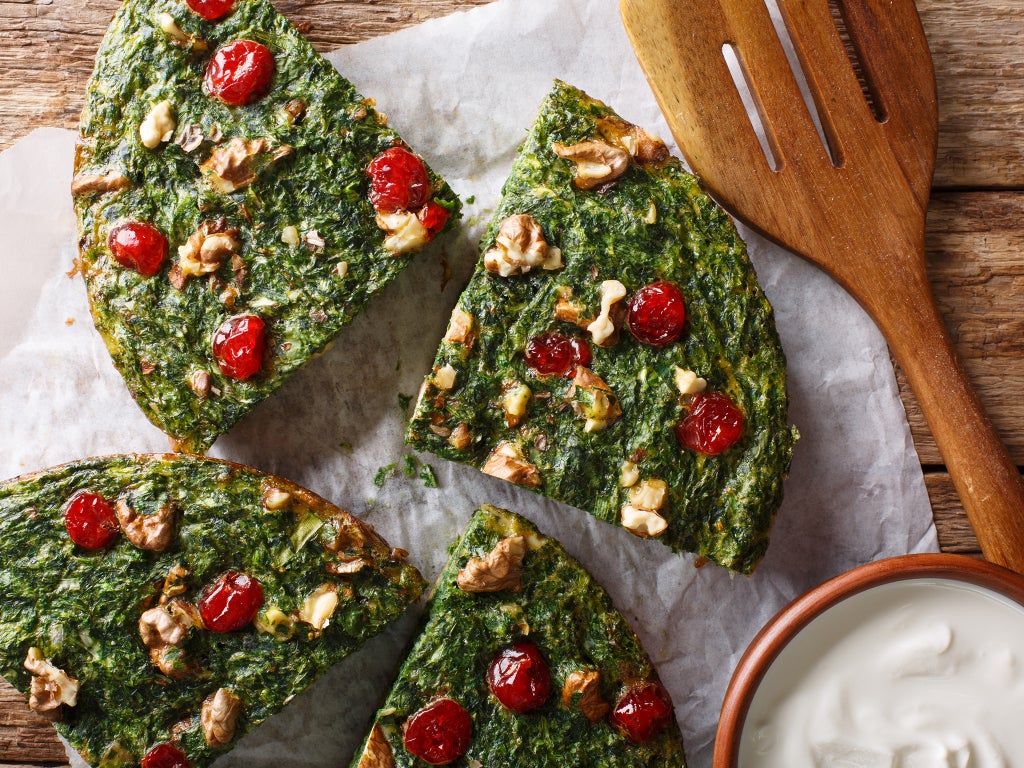
Salad Shirazi
Salad Shirazi – Iran’s Most Refreshing and Famous Persian Salad
Salad Shirazi (سالاد شیرازی) is a traditional Persian salad that originates from Shiraz, one of the most cultural and culinary-rich cities in Iran. This light, tangy, and refreshing salad is a staple side dish in Iranian cuisine.
If you’re planning to travel to Iran or explore authentic Persian recipes, Salad Shirazi is a must-try — especially for those looking for healthy, vegan, and gluten-free options.
🔍 What Is Salad Shirazi?
Salad Shirazi is a simple yet flavorful salad made with finely chopped cucumbers, tomatoes, and onions, dressed in fresh lime juice or grape vinegar, dried mint, salt, and pepper.
Its simplicity, combined with its cooling effect, makes it the perfect complement to heavier Persian dishes like Kebabs, Khoresht (stews), and polo (rice dishes).
🥗 Salad Shirazi Ingredients
- 🍅 Finely diced tomatoes
- 🥒 Peeled and finely diced cucumbers
- 🧅 Finely chopped red or white onion
- 🍋 Fresh lime juice or grape vinegar
- 🌿 Dried mint
- 🧂 Salt and black pepper
Optional: A touch of olive oil (for a Mediterranean twist)
This salad is all about balance — the tartness of the lime, the crisp texture of the vegetables, and the earthy flavor of mint combine beautifully.
🍽️ When & How Is Salad Shirazi Served?
Salad Shirazi is served cold and is usually placed on the table as a side dish with lunch or dinner. It’s a refreshing contrast to hot, savory Persian main dishes and pairs especially well with:
- Chelo Kebab (Iran’s national dish)
- Khoresht-e-Ghormeh Sabzi (herb stew)
- Khoresht-e-Fesenjan (pomegranate walnut stew)
- Baghali Polo (dill rice with broad beans)
Whether you’re dining at a local home, a restaurant in Shiraz, or enjoying a traditional Iranian food tour, you’re almost guaranteed to be served this salad.
✅ Why You Should Try Salad Shirazi in Iran
- ✅ Authentic Persian salad recipe
- ✅ Vegan and gluten-free
- ✅ Perfect for summer & warm climates
- ✅ Easy to digest & palate-cleansing
- ✅ Widely available across all cities in Iran
🌍 Where to Try Salad Shirazi in Iran?
While this salad is available throughout Iran, trying it in Shiraz — its hometown — is a unique cultural experience. Many restaurants, food tours, and cooking classes in Shiraz include Salad Shirazi as a key part of the meal.
👉 Book a Persian Food Tour in Shiraz with Wegoiran Travel Agency to taste this iconic salad and learn how to make it yourself with a local chef.
🧳 Final Thoughts
If you’re looking for a light, healthy, and authentic Persian food experience during your trip to Iran, Salad Shirazi is the perfect start. It’s more than just a salad — it’s a flavorful piece of Iranian culinary tradition that you can enjoy at every stage of your journey.
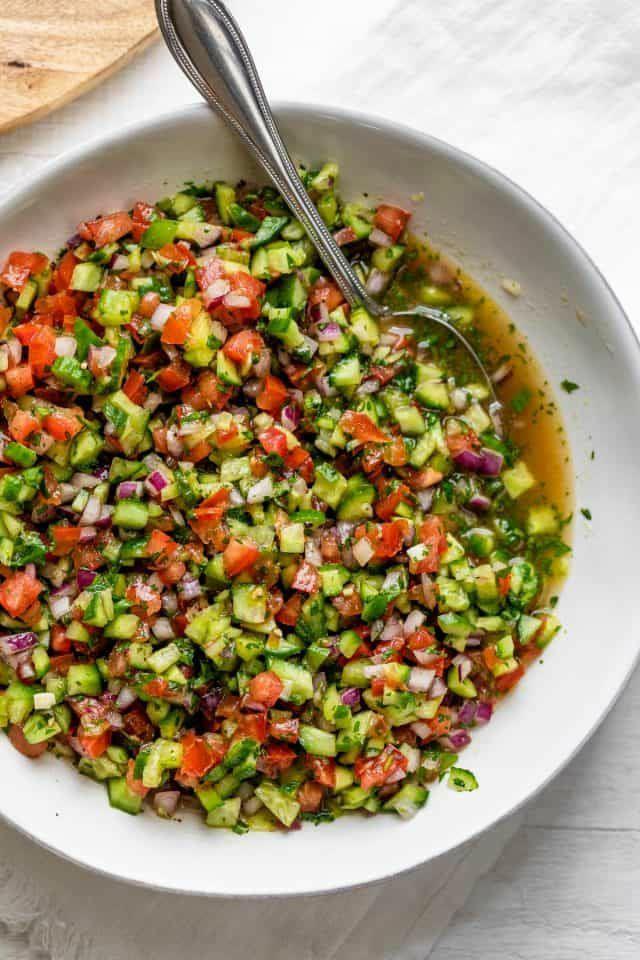
Joojeh Kebab
🍗 Joojeh Kebab – The Irresistible Persian Grilled Chicken You Must Try in Iran
Joojeh Kebab (جوجه کباب) is one of the most popular and beloved Persian kebabs in Iran. Known for its tender, juicy chicken pieces marinated in a flavorful blend of saffron, lemon juice, and yogurt, this dish is a must-try for every traveler exploring Iranian cuisine.
Whether you’re enjoying a family picnic in the mountains, dining at a traditional Iranian restaurant, or taking a food tour in Tehran or Shiraz, Joojeh Kebab will surely be on the menu.
🔍 What Is Joojeh Kebab?
Joojeh Kebab literally means “chicken kebab” in Persian. It consists of boneless or bone-in pieces of chicken, typically marinated in a saffron-lemon mixture, then grilled over open fire or hot coals for a smoky, tender, and flavorful experience.
This iconic Iranian grilled chicken dish is served everywhere—from luxury restaurants to roadside eateries and family barbecues.
🧂 Main Ingredients of Joojeh Kebab
- 🍗 Chicken breast or thighs (boneless or bone-in)
- 🧅 Onion (grated or sliced for the marinade)
- 🍋 Lemon juice or lime juice
- 🌼 Saffron (freshly brewed for color and aroma)
- 🧂 Salt and pepper
- 🥛 Yogurt (optional for extra tenderness)
- 🫒 Olive oil (adds moisture and richness)
The secret to an unforgettable Joojeh Kebab lies in marination—usually overnight—to ensure maximum flavor absorption and tenderness.
🍽️ How Is Joojeh Kebab Served in Iran?
Joojeh Kebab is traditionally served with:
- 🍚 Chelo (steamed saffron Persian rice)
- 🍅 Grilled tomatoes
- 🧈 Kebab butter (to mix with the rice)
- 🧂 Sumac (optional for added tang)
- 🫓 Fresh flatbread (Sangak or Lavash, if rice isn’t served)
- 🧃 Side of Doogh (Persian yogurt drink) or Coca-Cola
You’ll often find it accompanied by fresh herbs, pickles, or a crisp Salad Shirazi.
🏞️ Where to Eat Joojeh Kebab in Iran?
Whether you are in Tehran, Isfahan, Shiraz, or even in a small village, Joojeh Kebab is always available. For the most authentic experience:
- Try it in a mountain picnic near Darband (Tehran) or Abshar Margoon (Shiraz)
- Visit traditional Persian restaurants that specialize in kebabs
- Join a Persian cooking class and learn how to make Joojeh Kebab yourself
✅ Why Travelers Love Joojeh Kebab
- ✅ Kid-friendly & easy to digest
- ✅ Perfect for lunch or dinner
- ✅ High in protein, full of flavor
- ✅ A great non-red meat option
- ✅ Served all across Iran
🧳 Final Thoughts
If you’re planning a trip to Iran and wondering what food to eat, Joojeh Kebab should be at the top of your list. With its golden saffron color, juicy texture, and mouth-watering aroma, it represents everything travelers love about Persian food — hospitality, flavor, and tradition.
Don’t leave Iran without tasting this grilled masterpiece.
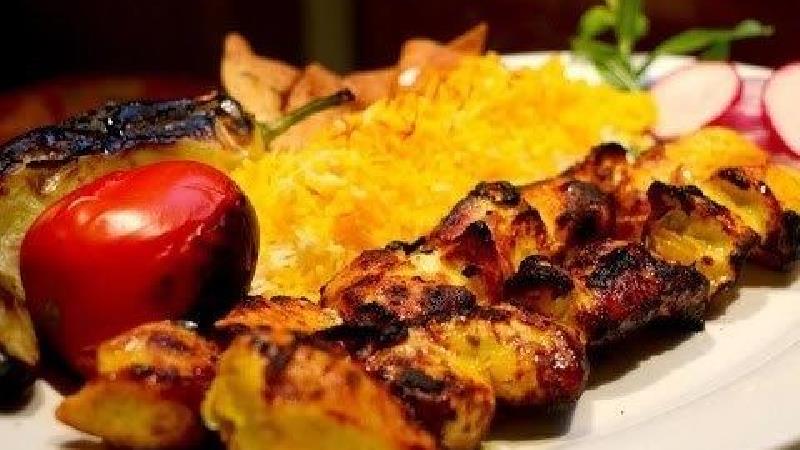
Baghali Polo ba Mahiche
🥘 Baghali Polo ba Mahiche – Persian Dill Rice with Lamb Shank You Must Try in Iran
Baghali Polo ba Mahiche (باقالی پلو با ماهیچه) is one of the most luxurious and flavorful traditional Persian dishes you can try in Iran. Made with aromatic dill rice mixed with broad beans (fava beans) and served with a tender, slow-cooked lamb shank, this dish is often reserved for special occasions, weddings, and holiday feasts—but you can enjoy it at many restaurants across Iran.
If you’re traveling through Iran and wondering what authentic Iranian food to try, Baghali Polo ba Mahiche is a must.
🔍 What Is Baghali Polo ba Mahiche?
- Baghali Polo = Persian rice with fava beans (baghali) and dill (shivid)
- Mahiche = Lamb shank, slow-cooked to fall-off-the-bone tenderness
Together, this combination is a rich, savory, and aromatic Iranian meal that’s both comforting and elegant.
🧂 Key Ingredients
For Baghali Polo (Rice with Dill & Fava Beans):
- Basmati rice
- Fresh or frozen fava beans (baghali)
- Fresh or dried dill (shivid)
- Saffron
- Oil or butter
- Salt
For Mahiche (Lamb Shank):
- Lamb shank
- Onion
- Garlic
- Tomato paste
- Saffron
- Turmeric, salt, pepper
- Water or broth for slow-cooking
The slow-cooked lamb is simmered in a saffron-rich broth, creating a juicy, flavorful meat that complements the fragrant green rice.
🍽️ How Is It Served?
Baghali Polo ba Mahiche is typically served with:
- A generous portion of saffron-topped dill rice
- A whole lamb shank, tender and juicy
- Sides like yogurt, salad Shirazi, pickled vegetables, and sometimes Doogh (Iranian yogurt drink)
- A crispy layer of Tahdig (scorched rice), if available
🏞️ Where to Eat Baghali Polo ba Mahiche in Iran
You can find this traditional dish in:
- Upscale Persian restaurants in Tehran, Shiraz, Isfahan, and Mashhad
- Local eateries specializing in home-style cooking
- During festivals, weddings, or Persian New Year (Nowruz) celebrations
- Some food tours or cooking classes
💡 Why You Should Try It
- ✅ One of the top-rated Persian rice dishes
- ✅ A protein-rich meal full of flavor and tradition
- ✅ Perfect for lunch or dinner
- ✅ Popular among both locals and tourists
- ✅ A great way to experience Iranian hospitality and food culture
📌 Fun Fact
In Iranian households, Baghali Polo ba Mahiche is often seen as a celebratory or formal dish, reserved for guests or festive occasions. Its aroma of dill and saffron will leave a lasting memory on your Iranian culinary journey.
🧳 Final Thoughts
If you’re compiling a list of the best food to try in Iran, don’t miss Baghali Polo ba Mahiche. This flavorful combo of herbed Persian rice and succulent lamb shank offers an unforgettable taste of Iran’s rich culinary heritage.
Dolmeh
🫒 Dolmeh – Persian Stuffed Grape Leaves You Must Try in Iran
Dolmeh (دلمه) is one of the most beloved and flavorful traditional Persian appetizers, known for its rich taste, beautiful presentation, and deep cultural roots. Whether you’re exploring Iranian cuisine for the first time or a food traveler in search of authentic local flavors, Dolmeh is a must-try.
In Persian cuisine, Dolmeh refers to a variety of stuffed vegetables, but the most famous version is Dolmeh Barg-e Mo (stuffed grape leaves).
🔍 What Is Dolmeh?
Dolmeh is a dish made by stuffing grape leaves (or sometimes vegetables like bell peppers, eggplants, or tomatoes) with a flavorful mixture of:
- Rice
- Ground meat (optional, often lamb or beef)
- Yellow split peas
- Fresh herbs (parsley, tarragon, dill, cilantro)
- Onion
- Spices (turmeric, cinnamon, black pepper)
- Sometimes barberries or raisins for a sweet-sour taste
- Tomato paste or pomegranate molasses for a tangy flavor
These stuffed leaves are gently simmered in a tangy broth until tender and juicy.
🧂 Popular Types of Dolmeh in Iran
- 🫒 Dolmeh Barg-e Mo (stuffed grape leaves) – The most iconic type
- 🌶️ Dolmeh Felfel (stuffed bell peppers)
- 🍆 Dolmeh Bademjan (stuffed eggplants)
- 🍅 Dolmeh Gojeh Farangi (stuffed tomatoes)
- 🍠 Even stuffed onions or zucchinis are common in different regions
🍽️ How and When Is Dolmeh Served?
Dolmeh is often served as:
- An appetizer or side dish in traditional Persian meals
- A main course in some Iranian homes, especially when made with meat
- A festive or holiday dish during Nowruz (Persian New Year) or family gatherings
It’s typically served warm or cold, often with yogurt or a drizzle of pomegranate syrup.
📌 Where to Eat Dolmeh in Iran
You can try Dolmeh in:
- Traditional Iranian restaurants
- Homemade meals (Dolmeh is a favorite in many Iranian families)
- Cooking classes or food tours offered in cities like Shiraz, Isfahan, and Tabriz
- Street markets or food bazaars during holidays
💡 Why Tourists Love Dolmeh
✅ It’s vegetarian-friendly (or optionally vegan)
✅ It’s packed with flavor and nutrients
✅ It’s a dish that shows the diversity of Persian regional cuisine
✅ Great for those who enjoy Mediterranean-style dishes like Greek Dolmas or Turkish Sarma
🌿 Regional Variations of Dolmeh
Iran’s diverse culture means Dolmeh recipes vary by region. In Tabriz (northwest Iran), the meat version is more common, while in southern cities, Dolmeh may include local herbs and spices unique to the area.
✈️ Final Thoughts
If you’re planning a trip to Iran or exploring Persian cooking, Dolmeh is one dish you shouldn’t miss. From its delicate preparation to its mouthwatering flavor, Dolmeh offers a rich taste of Iranian culinary tradition. Whether you’re enjoying it in a traditional restaurant or a home-cooked meal, this Persian classic is bound to become one of your favorites.
Fesenjan
🥘 Fesenjan (Fesenjoon) – The Persian Pomegranate Walnut Stew You Must Try in Iran
Fesenjan (also spelled Fesenjoon) is one of the most iconic and luxurious dishes in Persian cuisine, celebrated for its rich flavor, aromatic ingredients, and historical significance. If you’re planning to travel to Iran or simply exploring traditional Iranian food, Fesenjan is a must-try Persian dish that reflects the depth and elegance of Iran’s culinary heritage.
🌰 What Is Fesenjan?
Fesenjan (خورش فسنجان) is a traditional Iranian stew (khoresh) made with ground walnuts and pomegranate molasses, slow-cooked to perfection. It’s typically served with steamed saffron rice (chelo) and is known for its unique sweet and sour flavor.
Key Ingredients:
- Finely ground walnuts
- Pomegranate molasses or paste
- Chicken (or duck, sometimes lamb or meatballs)
- Onions
- Spices (turmeric, salt, pepper, cinnamon)
- Optional: sugar (for a sweeter taste), saffron for richness
🍴 When and How Is Fesenjan Served?
Fesenjan is commonly served during:
- Family gatherings and Persian celebrations
- Nowruz (Persian New Year)
- Formal dinners and weddings
- As a comfort food during colder seasons
This slow-cooked stew is best enjoyed with Persian-style rice, often accompanied by fresh herbs (sabzi khordan), pickled vegetables (torshi), or a side of yogurt (mast).
📍 Where Can You Eat Fesenjan in Iran?
Travelers can enjoy authentic Fesenjan at:
- Traditional restaurants in Isfahan, Shiraz, Tehran, and Tabriz
- Home-cooked meals during cultural tours or culinary experiences
- Food tours that showcase regional variations of Persian stews
For the most authentic experience, look for places that slow-cook the stew with natural pomegranate syrup and freshly ground walnuts.
🌿 Is Fesenjan Vegetarian or Vegan?
Although chicken or meat is traditionally used, vegetarian versions of Fesenjan are becoming increasingly popular. You can find or prepare Fesenjan with:
- Mushrooms
- Lentils or chickpeas
- Eggplant
This makes it an excellent option for vegetarian travelers in Iran looking for traditional dishes.
📈 Why Fesenjan Is a Must-Try Dish in Iran
✅ Deep cultural roots – Fesenjan dates back to the Achaemenid Empire
✅ Unique flavor – A perfect balance of tartness and sweetness
✅ Healthy ingredients – Full of antioxidants from walnuts and pomegranate
✅ Instagram-worthy presentation – Dark, rich stew beautifully paired with golden saffron rice
✅ Frequently searched Persian dish – Highly recommended on lists of “What to eat in Iran”
✈️ Final Thoughts
Whether you’re traveling to Iran, exploring Persian cooking, or simply in search of unique international cuisine, Fesenjan is a classic Iranian dish that delivers flavor, tradition, and elegance in every bite. Its rich blend of tangy pomegranate and hearty walnuts creates a taste that’s unforgettable and deeply satisfying.
Make sure to try Fesenjan at least once during your Iran journey — it’s a culinary experience you won’t want to miss.
Ghormeh Sabzi
🥘 Ghormeh Sabzi – The Heart of Persian Cuisine You Can’t Miss
Ghormeh Sabzi (خورش قرمه سبزی) is undoubtedly one of the most beloved and iconic dishes in Persian cuisine. Known as the Persian herb stew, Ghormeh Sabzi is a dish that captures the essence of Iranian culture and offers a rich, flavorful experience for anyone traveling to Iran or exploring Iranian food. Whether you’re visiting Iran or cooking Persian food at home, Ghormeh Sabzi should be at the top of your must-try list.
🌿 What Is Ghormeh Sabzi?
Ghormeh Sabzi is a Persian herb stew made with a combination of herbs, meat, and beans. This savory stew is simmered to perfection, resulting in a deliciously fragrant and flavorful dish. The rich green color and deep herbal flavor make it a standout dish in Iranian cuisine.
Key Ingredients of Ghormeh Sabzi:
- Fresh herbs: Parsley, cilantro, fenugreek, and chives (sometimes dried or frozen)
- Beef or lamb (though some variations use chicken)
- Kidney beans or black-eyed peas
- Dried limes (limoo omani) for a tangy flavor
- Onions, turmeric, and spices like cinnamon and black pepper
Ghormeh Sabzi is usually served with Persian rice (chelo) and fresh herbs (sabzi khordan). The stew’s signature tangy taste comes from the dried limes, making this dish incredibly unique and comforting.
🍴 How Is Ghormeh Sabzi Served?
Traditionally, Ghormeh Sabzi is served with:
- Steamed saffron rice (chelo)
- Doogh (a yogurt-based drink with mint)
- Torshi (pickled vegetables) or kashk (yogurt) on the side
Whether for lunch or dinner, this hearty and flavorful dish is ideal for family gatherings, festive occasions, or a home-cooked meal during the colder months.
📍 Where to Eat Ghormeh Sabzi in Iran?
If you’re traveling to Iran, Ghormeh Sabzi is a dish that you can find almost everywhere. Whether in Tehran, Isfahan, Shiraz, or Tabriz, here’s where you should look for authentic versions of Ghormeh Sabzi:
- Traditional Persian restaurants
- Home-cooked meals during cultural tours
- Local eateries in Iranian cities serving authentic Persian food
- Food tours that explore the diverse tastes of Iran
🌱 Is Ghormeh Sabzi Vegetarian or Vegan?
While the traditional version of Ghormeh Sabzi contains beef or lamb, vegetarian and vegan variations are common and just as delicious. These versions substitute the meat with:
- Mushrooms
- Lentils or chickpeas
For vegetarian travelers or those seeking plant-based Persian dishes, vegetarian Ghormeh Sabzi is a flavorful and satisfying choice.
📈 Why You Should Try Ghormeh Sabzi in Iran
Here are some reasons why Ghormeh Sabzi is a must-try Persian dish when you visit Iran:
- Rich cultural history – Ghormeh Sabzi has been part of Iranian culinary traditions for centuries.
- Perfect balance of flavors – The combination of herbs, tangy dried lime, and savory meat creates a mouth-watering dish.
- Healthy and nutritious – The fresh herbs, beans, and lean meat make Ghormeh Sabzi a nutrient-rich, filling meal.
- Highly recommended – Ghormeh Sabzi is one of the most popular dishes among both locals and tourists.
✈️ Final Thoughts
Whether you’re traveling to Iran or cooking up a storm in your kitchen, Ghormeh Sabzi is a flavorful and heartwarming dish that showcases the authentic taste of Iran. Its unique blend of herbs, tender meat, and tangy dried lime offers an unforgettable experience for anyone who loves to explore world cuisines.
Make sure Ghormeh Sabzi is on your list of must-try Iranian foods, and if you ever get the chance to visit Iran, be sure to enjoy this classic Persian dish with a side of saffron rice and fresh herbs.


